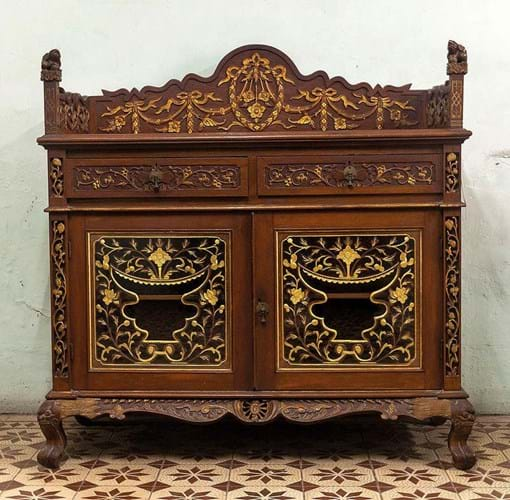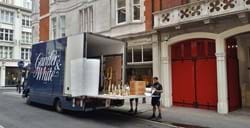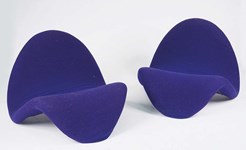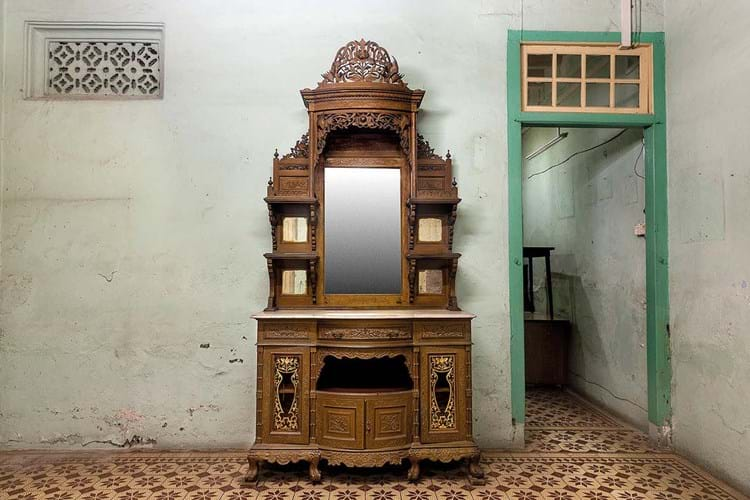
The sale at Hotlotz (24% buyer’s premium) in Singapore that closed online on May 2 included the contents of a Peranakan shophouse.
The furniture and many of the furnishings had been bought for the property. Number 20 Blair Road, a merchants’ street laid out in 1900, had since remained largely untouched, its tiled and painted interior providing an atmospheric glimpse into the life of old Singapore.
The Peranakans, descended from the first waves of Chinese settlers into the ports of the Malay Peninsula and the Indonesian Archipelago, readily embraced Western culture and religion as a means to advancement.
In Singapore, where administrative and civil service posts were often filled by prominent Straits Chinese, they were known also as the King’s Chinese due to their loyalty to the British Crown.
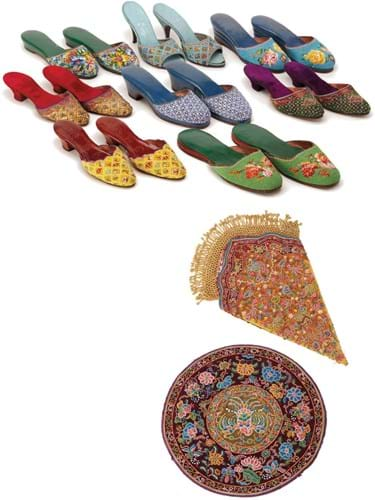
These pairs of beaded slippers or kasot manek sold alongside beadwork elements of wedding attire – Sin$20,000 (£10,800) at Hotlotz.
Mix of cultures
This mixing of Chinese and local culture can be clearly seen in Peranakanese (or Baba-Nyonya) decorative arts: furniture that mixes English, Dutch and Chinese elements, Straits Settlement ceramics imported from China and meticulously embroidered and beaded textiles and garments that owe much to European floral subjects.
In recent years, as the once distinct lifestyle fades into history, Peranakanese material culture has become a lively collecting market based in Malaysia and Singapore.
Perhaps the best-known accessory of the Nyonya is the beaded slipper or kasot manek: first popular in the early 20th century, they were made by stringing tiny faceted Bohemian glass beads (manik potong) onto canvas in bold floral patterns.
A lot here comprising eight pairs of kasot manek alongside elements of embroidery and beadwork that formed part of a wedding attire, received 71 separate bids. Estimated at Sin$150-250, it sold to a Singapore bidder at Sin$20,000 (£10,800).
East and West
Typical of the Peranakanese furniture made for the shophouse, c.1910, was a carved and parcel gilt side cabinet that combined Western motifs (a gallery top decorated with ribbon tied swags) with Eastern inspired dragon carved supports and pierced decoration. It also attracted fierce competition, selling way above a Sin$400-600 guide to bring Sin$24,000 (£12,900).
Straits Chinese porcelain, popularly known as Nyonya ware, was exported from China between 1856 (the beginning of the Tongzhi era) and 1945 (the end of the Second World War).
Ostensibly similar to much later Chinese porcelain (many have red enamel factory marks to the base), it assumes distinct colour combination, motifs and shapes that define the collecting hierarchy.
Popular local forms such as the covered bowl and stand (kamcheng) and the covered jar (kat may or chupus) decorated with traditional designs against strong background colours are particularly desirable. Many of these ‘festive’ pieces (blue and white wares were reserved for everyday use) were made as wedding sets.
Several group lots sailed away at Hotlotz including three pieces (a kamcheng and two chupus) decorated with flowers, foliage, Taoist symbols and phoenix against at pink and brown ground sold at Sin$8500 (£4500).


